TPO -> TPOs of French and Spanish North Africa
TPOs of French and Spanish North Africa
By Tony Goodbody
Introduction
As the French influence spread throughout much of Africa, with the consequent building of railways, the authorities began to introduce Courrier Convoyeur routes on the French model in the French Colonies. The same was true of the Spanish Colonies to some extent but there were, of course, far fewer of them.
Most French routes used the familiar wavy line circle but there were enough exceptions to make life interesting. Almost all the postmarks are scarce if not rare and the collector must be satisfied with relatively poor quality strikes.
Algeria
Chase(1) lists some 80 or so routes up to 1900, of which two crossed the border into Tunisia. Most but not all the 80 routes had both an out and a return working. A minority of routes were in existence early enough to use the small scalloped circle (figure 1). This is what Chase calls Type I.
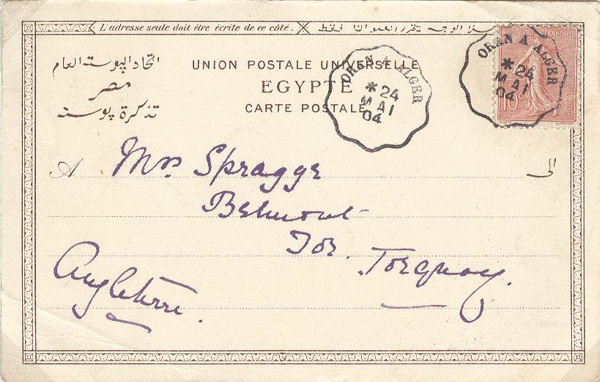
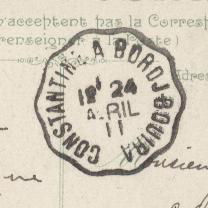 Most routes began to use the large scalloped circle when this type was introduced in France (figure 2) (Type II).
Most routes began to use the large scalloped circle when this type was introduced in France (figure 2) (Type II).
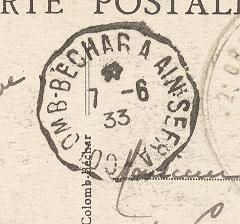 Chase only goes up to 1900 so that Type III postmarks (figure 3) are not listed or illustrated, nor are any routes introduced post 1900 considered.
Chase only goes up to 1900 so that Type III postmarks (figure 3) are not listed or illustrated, nor are any routes introduced post 1900 considered.
This author does not know when courrier convoyeur routes ceased in Algeria but they were still operating in 1971 (Figure 4)
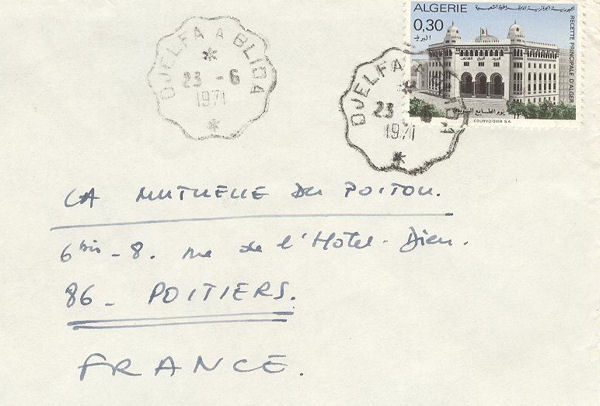
Morocco
Apart from an isolated short line of no importance, railways did not come to Morocco until after 1900. The convoyeur routes which were eventually established are therefore not discussed by Chase (figure 5).
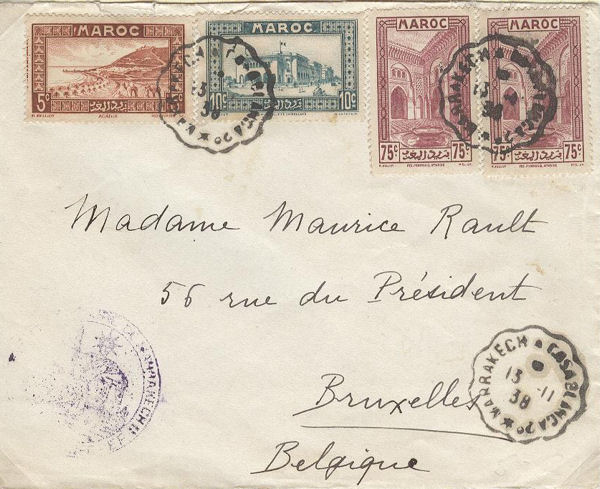
Spanish Morocco
Nathan(2) deals with Ambulantes in the Spanish Colonies and devotes half a dozen pages to Spanish Morocco. He illustrates several different postmarks, all of them of the octagonal design used by Spain. He does not however give a definitive list of the routes known.
Shown in figure 6 is the mark used by the NADOR - SEGAHGAN AMBULANTE. This line was part of the Melilla - Nador -Uixan Railway, 31 km. metre gauge, built in 1909 and owned by the Spanish Rif Mining Co.
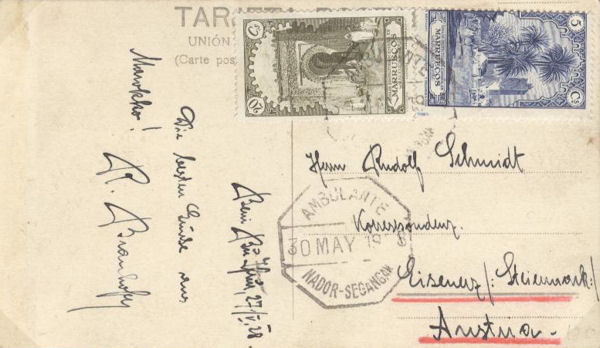
Tunisia
Tunisia is perhaps the most interesting of the countries considered here. Although there were only about two dozen routes they managed between them to use, as well as the types I, II and III used by Algeria, three more types which Chase denotes as types a, b & c.
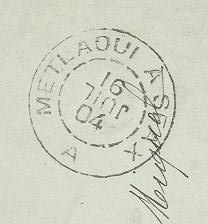 Type 'a' was a double circle similar to the marks used by the early French TPOs (figure 7).
Nevertheless this, like all the others, was a courrier convoyeur.
Type 'a' was a double circle similar to the marks used by the early French TPOs (figure 7).
Nevertheless this, like all the others, was a courrier convoyeur.
Type 'b' was a curious mark with a circular ring on which was superimposed a scalloped circle (figure 8).
Type 'c' was a single circle like a French TPO mark, but again it was used in Tunisia by courriers convoyeurs. Types a, b & c all had a number of sub - types too numerous to list here.
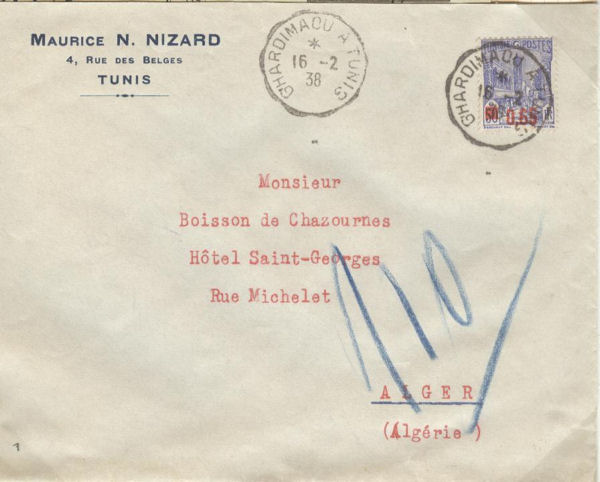
Bibliography:
(1) Chase, C. "Catalogue des Cachets des Courriers-Convoyeurs (France, Algérie et Tunisie) de l'origine à 1900."
Les Editions E.H. de Beaufond, Paris, 1954.
(2) Nathan, N.S. "Ambulantes y Marcas Ferroviarias de España y Colonias." Coleccion Filatélica Hobby, Madrid.

